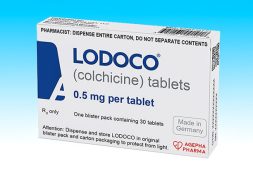
The potential of exercise in preventing Alzheimer’s disease has unveiled a promising avenue for new treatments in the fight against this currently incurable condition.
Scientists have pinpointed a hormone called irisin, released during physical activity, which has intriguing connections to the brain plaques and tangles associated with Alzheimer’s. These findings offer a glimmer of hope in the quest to understand and combat this devastating disease.
Recent research conducted by experts at Massachusetts General Hospital has shed light on the link between exercise and Alzheimer’s prevention. Their groundbreaking results, published in the journal Neuron, provide significant insights into the mechanisms involved in the relationship between physical activity and the disease. The team had previously developed the first-ever 3D human cell culture models of Alzheimer’s, providing a valuable tool for studying the condition.
These studies allowed the researchers to document two major hallmarks of Alzheimer’s disease: the formation of amyloid beta deposits followed by the development of tau tangles in the brain. While previous research had established that exercise could reduce amyloid beta deposits in various mouse models, the underlying mechanisms remained a mystery. This recent work aimed to bridge that knowledge gap.
One of the key discoveries was the hormone irisin, which is released during exercise. Irisin has been associated with regulating glucose and lipid metabolism in fat tissue and increasing energy expenditure by stimulating the browning of white fat tissue.
Interestingly, studies had already revealed the presence of irisin in both human and mouse brains. However, it was noted that individuals suffering from Alzheimer’s had reduced levels of this hormone in their brains.
In their quest to understand the role of irisin in Alzheimer’s, the research team applied the hormone to their 3D cell culture model of the disease. Their findings demonstrated a notable outcome.
“First, we found that irisin treatment led to a remarkable reduction of amyloid beta pathology,” said Dr. Se Hoon Choi.
“Second, we showed this effect of irisin was attributable to increased neprilysin activity owing to increased levels of neprilysin secreted from cells in the brain called astrocytes.”
Neprilysin, an enzyme known to degrade amyloid beta, was found in the brains of mice exposed to exercise. This suggests a connection between irisin and the potential breakdown of amyloid beta in the brain.
Moreover, previous studies had indicated that irisin injected into the bloodstream could travel into the brain, which could hold significant therapeutic promise. While more research is needed to understand the intricacies of this process fully, it paves the way for potential treatment strategies in the future.
Dr. Rudolph Tanzi, a senior author of the study and director of the hospital’s Genetics and Aging Research Unit, said, “Our findings indicate that irisin is a major mediator of exercise-induced increases in neprilysin levels leading to reduced amyloid beta burden, suggesting a new target pathway for therapies aimed at the prevention and treatment of Alzheimer’s disease.”
The correlation between exercise, irisin, and Alzheimer’s opens up exciting possibilities for preventing and managing this debilitating disease. While Alzheimer’s remains a major challenge in the realm of neurodegenerative conditions, these findings provide a ray of hope for those affected and their families. The research underscores the important of physical activity in maintaining brain health and offers a glimpse into a future where new treatments for Alzheimer’s may become a reality.



